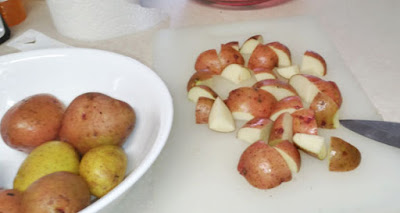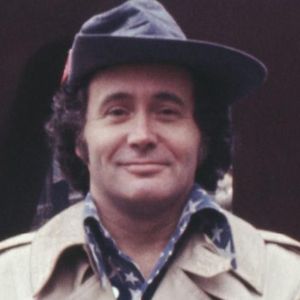The secret to this dish is using fresh vegetables and a good quality sausage. You make it your own by using your favorite steak seasoning
Ingredients:
½ lbs of fresh asperagus
5 cooked sausages cut into 3rds
½ small potatoes (washed and quartered)
2 Tbs olive oil
1 tsp salt
1Tbs Grill Mates Seasonings (or your favorite steak seasonings)
½ tsp parsley flakes
¼ tsp black pepper
1 tsp lemon juice
Parmesan cheese
Preheat oven to 400 degrees Spray a foil lined and rimed baking sheet.
Cut up the sausages.
Rinse and cut your asperagus.
Rinse and cut in half, then quarter the small potatoes.
Place in a large bowl.
In small bowl of 2 Tbs olive oil, mix in 1 tsp salt, 1 Tbs Grill Mates Seasonings. ¼ tsp of parsley flakes. Mix and pour into large bowl.
Use two wooden spoons to gently mix all the ingredients together.
Spread it evenly onto a foil lined rimed baking sheet.
Place in the oven for 30 minutes or until it starts to brown, turning the sheet pan around once.
Remove from the oven.
Drizzle 1 tsp of lemon juice on the veggies and toss gently.
If you wish sprinkle with parmesan cheese.
A full meal made on just one pan, in the oven while you did other things.
A beautiful dish to set before my Master Indy.
socialslave
To satisfy and restore.
To nourish, support and maintain.
To gratify, spoil, comfort and please,
to nurture, assist, and sustain
…..I cook!
Please buy slave's cookbook:
The Little Black Book of Indiscreet Recipes by
Dan White
==============================
Robert Indiana
Robert Indiana (born Robert Clark; September 13, 1928 – May 19, 2018) was an LGBT artist. His "LOVE" print, first created for the Museum of Modern Art's Christmas card in 1965, was the basis for his 1970 Love sculpture and the widely distributed 1973 United States Postal Service "LOVE" stamp.
Robert Indiana was born Robert Clark in New Castle, Indiana, and was adopted as an infant by Earl Clark and Carmen Watters. After his parents divorced, he relocated to Indianapolis to live with his father so he could attend Arsenal Technical High School. He graduated as valedictorian of his class of 1946.
After serving for three years in the United States Army Air Forces, Indiana studied at various art schools in Chicago, Maine, and Edinburgh University. He returned to the United States in 1954 and settled in New York City.
Straightwashed even unto death, few of the multiple notices of the passing of the Army Air Corps veteran acknowledged that his L O V E was for men. A fact that should have already been specifically known by those writing about his death for myriad art sites.
Indiana's best-known image is the word Love in upper-case letters, arranged in a square with a tilted letter "O". The iconography first appeared in a series of poems originally written in 1958, in which Indiana stacked LO and VE on top of one another, then in a painting with the words "Love is God".
The inspiration for that “LOVE” image dates to 1956 when abstract artist Ellsworth Kelly walked into the Utrecht Art Supply store on West 57th Street in New York City. Indiana was working there for $20 a week. Kelly asked for a specific postcard by Matisse. Soon they were a couple.
Bradford R. Collins in Pop Art explains: “On the purely private plane works in the series are bittersweet love poems expressing Indiana’s carnal love for “Ellsworth Kelly”.
The red/green/blue image was then created for a Christmas card for the Museum of Modern Art in 1964. It was put on an eight-cent U.S. Postal Service postage stamp in 1973, the first of their regular series of "love stamps".
The image LOVE on the stamp generated $25+ million in sales (but only a flat $1000 fee for Indiana) and inspired a continuing series of other stamps with artistic renderings of the word. Having failed to properly copyright his image, whatever his income, it can’t have matched what those who freely marketed reproductions of his image, or resold originals.
Privately owned big L O V E sculptures sold for over $3 million and over $4 million in 2007 and 2011 respectively.
Hebrew version
In 1977, he created a Hebrew version with the four-letter word Ahava (אהבה "love" in Hebrew) using Cor-ten steel, for the Israel Museum Art Garden in Jerusalem, taken in 2012
He was the star of Andy Warhol's film Eat (1964), which is a 45-minute film of Indiana eating a mushroom.
The artist himself created the first monumental
L O V E sculpture, 12-ft. high and weighing three tons, in 1970, which, after installations in various places, became a part of the permanent collection in 1975 of the Indianapolis Museum of Art in 1975.
In 1969, he began renting the upstairs of the mansarded Victorian-style Odd Fellows Hall named "The Star of Hope" in the island town of Vinalhaven, Maine, as a seasonal studio from the photographer Eliot Elisofon.
Half a century earlier, Marsden Hartley had made his escape to the same island. When Elisofon died in 1973, Indiana bought the lodge for $10,000 from his estate. He moved in full-time when he lost his lease on the Bowery in 1978.
Between 1989 and 1994, Indiana painted a series of 18 canvases inspired by the shapes and numbers in the war motifs paintings that Marsden Hartley did in Berlin between 1913 and 1915.
Indiana grew reclusive in his final years. He died on May 19, 2018, at his home in Vinalhaven, Maine, of respiratory failure at the age of 89. One day before his death, a lawsuit was filed over claims that his caretaker had isolated him from family and friends, and was marketing unauthorized reproductions of his works.
While late gay rights pioneer Barbara Gittings might not have known Indiana was gay when she posed for this photo in Philadelphia, she told the crowd at the 1973 New York Pride march rally that, “Those of us who are out are oiling the closet door hinges just as fast as we can,” and led them in chanting: “Gay is good! Gay is proud! Gay is natural! Gay is normal! Gay is gorgeous! Gay is positive! Gay is healthy! Gay is happy! Gay is LOVE!”




















No comments:
Post a Comment